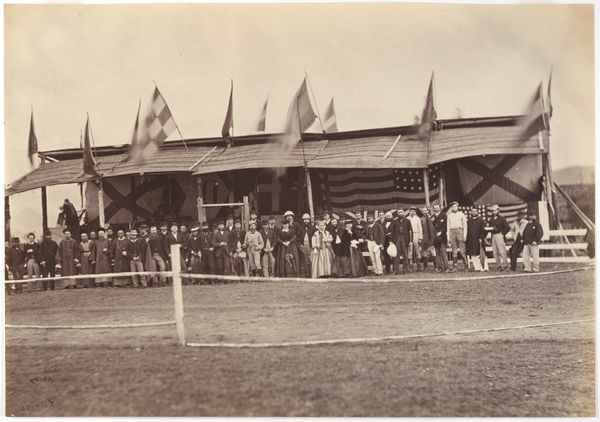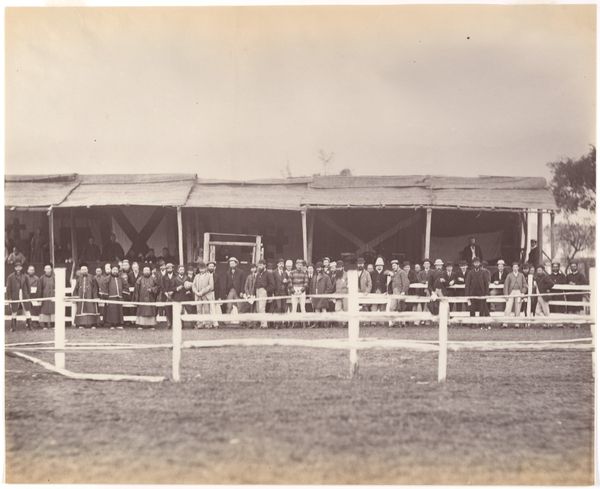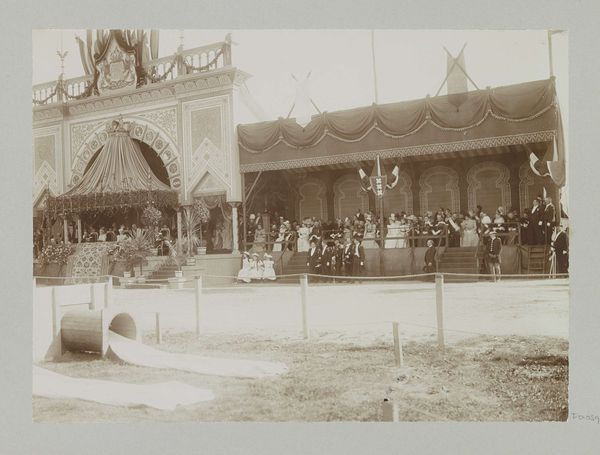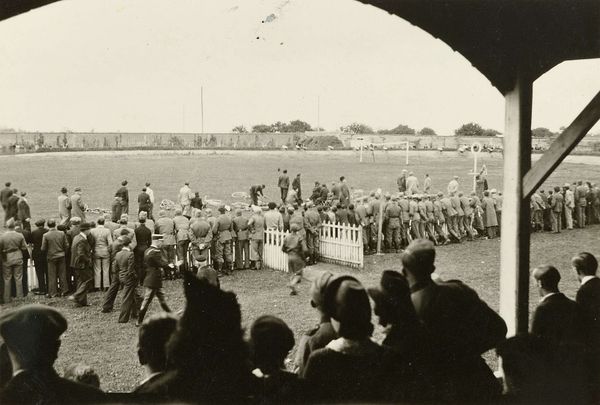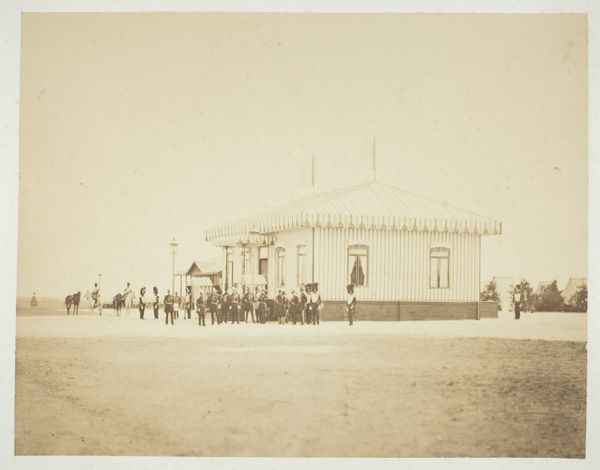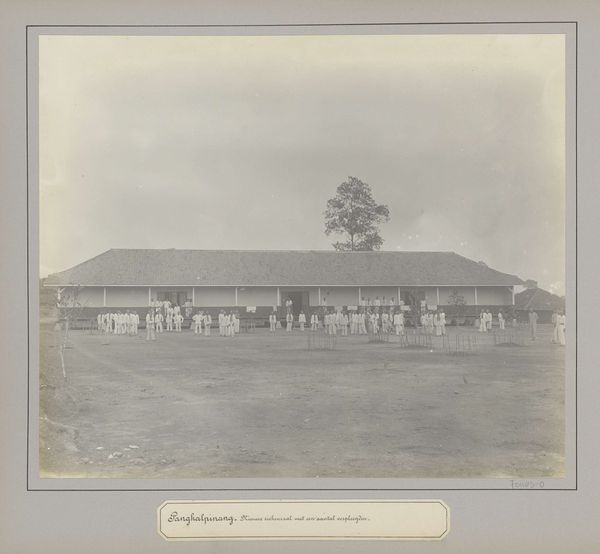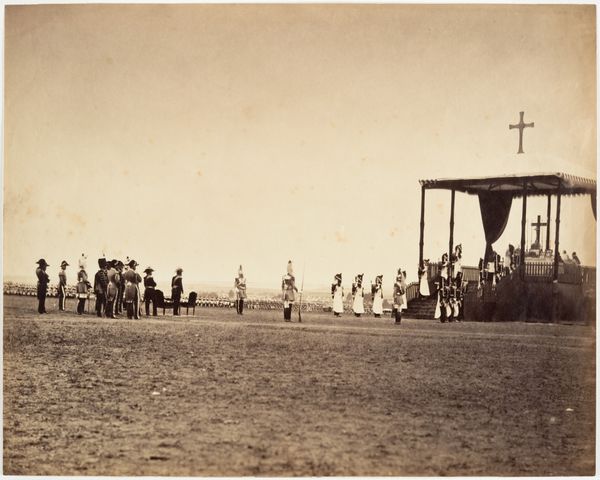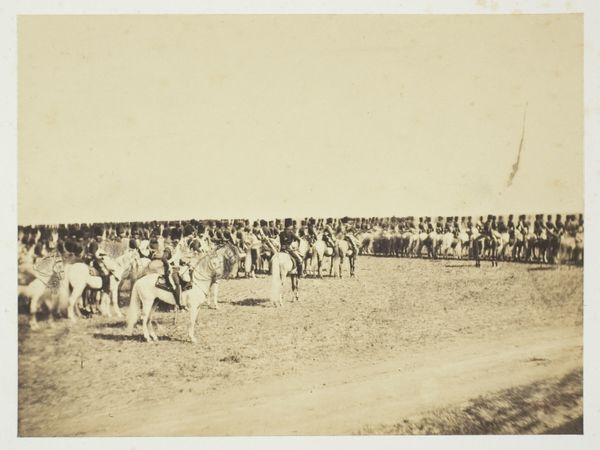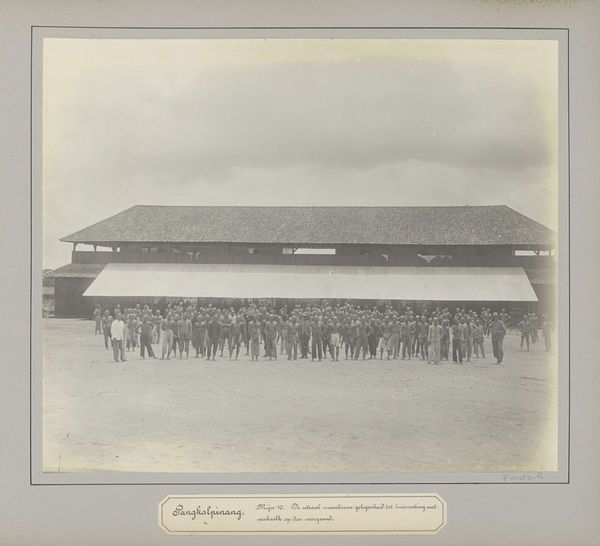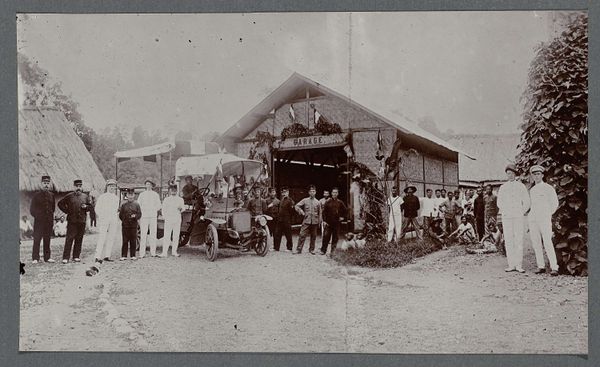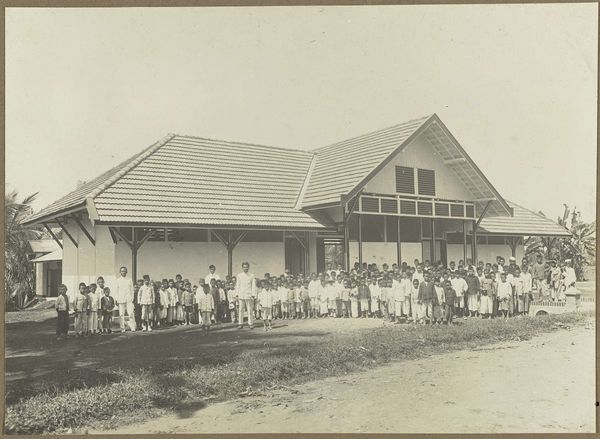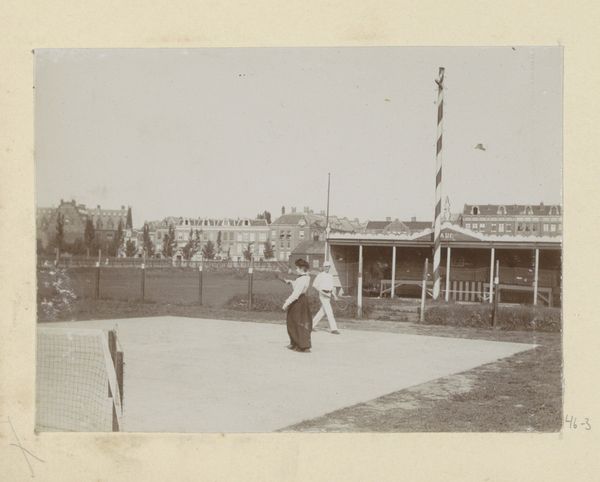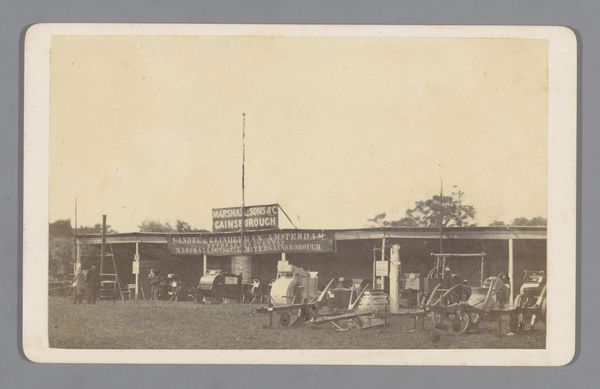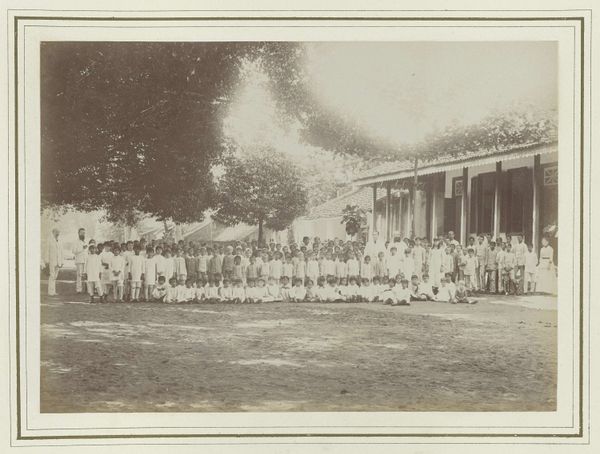
print, photography, gelatin-silver-print
#
portrait
#
film photography
# print
#
asian-art
#
photography
#
historical photography
#
gelatin-silver-print
#
genre-painting
#
realism
Dimensions: Image: 6 3/4 × 10 1/16 in. (17.2 × 25.6 cm)
Copyright: Public Domain
Curator: We’re looking at John Thomson’s 1871 photograph, "The Grand Stand, Amoy." It’s a gelatin-silver print depicting a crowd of men assembled on a tiered viewing platform. Editor: My immediate impression is of rigid formality—a somber and almost suffocating assembly, despite the openness of the scene. The tonal range is limited, contributing to that feeling. Curator: Indeed. Consider this photograph as a product of its time. Thomson documented 19th-century China, revealing the socio-political power dynamics inherent in colonial encounters. The grandstand itself speaks to a Western presence and the gaze of privilege observing local life, framed, and therefore contained. The flag atop underscores that domination, suggesting a visual claiming of the space. Editor: The composition reinforces this hierarchical reading. The geometric scaffolding of the grandstand and the linear arrangement of the figures—mainly white men—create a stark, almost clinical structure. There’s a clear emphasis on horizontal lines, but all that linear, rational organization makes it feel static, almost entombed, don’t you think? Curator: Precisely, the stasis and lack of dynamism within the photograph further emphasize that imbalance of power; consider that it’s not merely an event that’s being recorded but also the authority inherent in the act of observation, one imbued with the complex implications of cultural imperialism. The individuals may perceive it as progress or an exhibition, but it arguably is control. Editor: I am thinking of the effect created by that neutral sky in the background which contrasts sharply with the activity within the covered platform. Even in monochrome, I am sensitive to these gradations of shade. The subtle transitions across the architectural details are intriguing, particularly the light as it glances against those rustic beams that define the scene, no? Curator: Indeed, Thomson's photography offers us both a historical document and a potent reminder to critically examine the relationship between the observer and the observed, and to challenge power structures wherever they manifest, whether in the 19th century or our own time. Editor: This has been an insightful conversation about form, framing, and how those structural decisions shape our reception, wouldn't you agree?
Comments
No comments
Be the first to comment and join the conversation on the ultimate creative platform.
